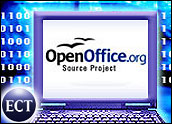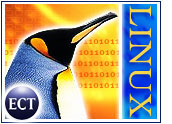
IBM announced Wednesday that it is rolling out a new version of its database software for Linux and Unix customers. The DB2 Universal Database version 8.2, code-named Stinger, is designed to streamline administrative tasks and will be available September 17.
Stinger also has the potential to boost IBM in its competition with Oracle in the database market space. Forrester analyst Noel Yuhanna told LinuxInsider that the field is very competitive, with both companies looking for an edge.
“There’s been aggressive growth in the Linux database market especially,” he said. “And it’s only due to get bigger.”
The Buzz
IBM created Stinger to lower database operating costs as well as heighten DB2 performance. One of the product’s dominant features is its automation tools, which will allow database administrators to automate routine tasks and troubleshoot problems with more efficiency. Failover capabilities also have been spruced up for clustered database servers.
The company notes that it will be especially effective when running on Linux server clusters. New features include the ability to partition and optimize large databases on many servers automatically and in a much faster way than with earlier versions of the software.
Proving that it seeks to cater to Microsoft developers as well as the Linux market, IBM also has noted that Stinger includes improved Windows and .NET application development. These features spring from IBM’s recent acquisition of Rational Software, a developer of .NET, J2EE and other programming tools.
Yuhanna noted that the improvements will give DB2 higher performance and reliability. “This is something customers have needed,” he said.
Linux Focus
With Stinger, IBM is especially keen to tap into the growing Linux market, according to Paul Rivot, IBM’s director of database servers and business intelligence. He told LinuxInsider: “An interesting twist is that we’re seeing a lot of .NET developers that are being asked to deploy on Linux, even though they’re using their skills on .NET.”
Also, many Web services are being developed on Linux, Rivot noted, and IBM anticipates more growth in Linux-based Web services deployment.
Another major area that Stinger will address is the increasing use of Linux in creating homegrown applications that need to be scaled. “People want the capability to create and scale these applications and still use Linux,” said Rivot. “We’re giving them the ability to do that.”
Market Share
The database market has proven to be a quick mover in recent years, with IBM, Oracle and Microsoft each trying to capture the top spot. Earlier this year, Oracle introduced its Oracle 10g, a database update designed to increase the speed of clustered servers.
Gartner notes that IBM had the largest share last year in terms of license revenue, but when service fees are included, IDC discovered that Oracle outpaces Big Blue. Microsoft has somewhat fallen behind as its next SQL server, Yukon, faces delayed release.
One of the reasons for the increasing heat in the database market is that companies have started spending for the technology again, following a brief industry malaise, according to analysts. Spending decreased in 2001 and 2002 when companies slashed budgets, then jumped up again as database needs sparked purchasing.
With company wallets open again, many believe that the database market will prosper, with the IBM and Oracle moves serving as an indication of this, Yuhanna stated.
Going Open
Yuhanna added that several open-source databases also are gaining in popularity, including MySQL and Firebird. Sybase’s recent announcement of a free Linux enterprise-class database for production use should also garner notice from Linux users.
“Many companies have started to look at Linux deployment,” said Yuhanna. “It’s not surprising that so many databases would be developed to serve those customers.”
As IBM works to establish an even stronger foothold in the market and rise above the competition, Linux and Unix users could benefit from IBM’s efforts to create a leaner, stronger database application.
“Certainly, Linux is the fastest growing operating system,” said Rivot. “Optimization is very critical to expanding Linux’s capabilities, and what we’re doing with Stinger is addressing that.”





















































